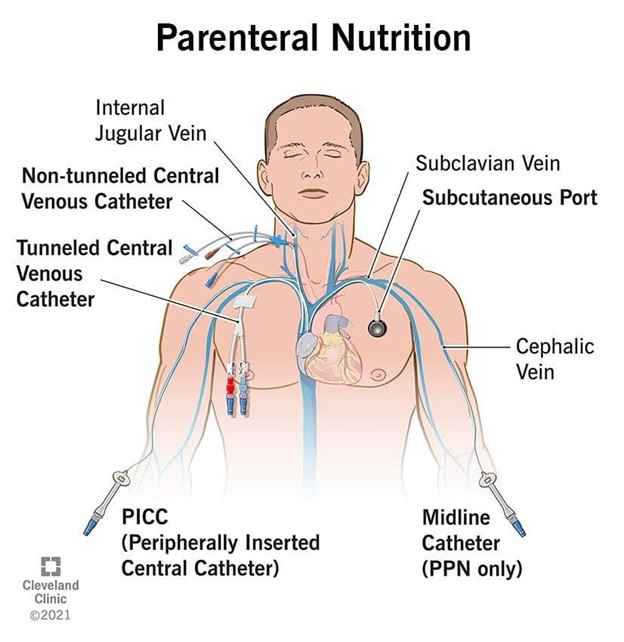A nurse is caring for a client who is postoperative following an appendectomy.
Vital Signs 1800:
Temperature 98.4° F (36.8° C) Heart rate 104/min
Respiratory rate 22/min
Blood pressure 142/80 mm Hg O2 saturation 97% on room air 1800:
Client alert and oriented x 4
Skin warm and dry
Lungs clear on auscultation
Bowel sounds hypoactive in all four quadrants Urine clear yellow
Incisional dressing clean and dry
Client reports pain as 6 on a scale of 0 to 10
1815:
Morphine administered as prescribed
2000:
Temperature 98.4° F (36.8° C) Heart rate 110/min Respiratory rate 24/min
Blood pressure 158/88 mm Hg O2 saturation 93% on room air.
Which of the following 4 client findings should the nurse report to the provider?
Bowel sounds
Oxygen saturation
Nausea
Vomiting
Pain level
Heart rate
Incision characteristics
Lungs sounds
Correct Answer : B,C,E,F
- A. Bowel sounds are hypoactive in all four quadrants, which is expected after an appendectomy due to anesthesia and decreased peristalsis. This is not a finding that needs to be reported to the provider.
- B. Oxygen saturation is 93% on room air, which is below the normal range of 95% to 100%. This could indicate impaired gas exchange, respiratory depression, or infection. This is a finding that needs to be reported to the provider.
- C. Nausea is a common feature of appendicitis and should go away with appendectomy. This finding should, therefore, be reported to the healthcare provider.
- D. Vomiting is also a common side effect of morphine and anesthesia, and can be managed with antiemetics and fluids. This is not a finding that needs to be reported to the provider unless it persists or interferes with oral intake.
- E. Pain level is 6 on a scale of 0 to 10. The client received morphine as prescribed at 1815, and the pain level is still significant. This is a finding that needs to be reported to the provider
- F. Heart rate is 110/min, which is above the normal range of 60 to 100/min. This could indicate pain, anxiety, dehydration, infection, or bleeding. This is a finding that needs to be reported to the provider.
- G. Incision characteristics are clean and dry, which is expected after an appendectomy. However, the nurse should monitor for signs of infection such as redness, swelling, warmth, drainage, or odor. This is a finding that needs to be reported to the provider if any signs of infection are present.
- H. Lungs sounds are clear on auscultation, which is expected after an appendectomy. However, the nurse should encourage deep breathing and coughing exercises to prevent atelectasis and pneumonia. This is a finding that needs to be reported to the provider if any abnormal lung sounds are heard such as crackles, wheezes, or diminished breath sounds.
Nursing Test Bank
Naxlex Comprehensive Predictor Exams
Related Questions
Correct Answer is B
Explanation
Choice A rationale:
Almonds are not typically associated with latex allergy or cross-sensitivity. Latex cross-reactivity is more commonly seen with certain fruits such as bananas, avocados, kiwis, and chestnuts.
Choice B rationale:
Bananas are known to be cross-reactive with latex allergy. Individuals allergic to latex are more likely to have allergies to certain fruits, including bananas. This cross-sensitivity occurs due to the structural similarity between latex proteins and proteins found in these fruits.
Choice C rationale:
Hazelnuts are not commonly associated with latex cross-reactivity. While some individuals with latex allergy may also be allergic to hazelnuts, it is not a high-risk food in the context of latex cross-sensitivity.
Choice D rationale:
Strawberries are not typically associated with latex allergy or cross-reactivity. Latex cross-reactivity is more commonly seen with fruits like bananas, avocados, kiwis, and chestnuts. Strawberries are not among the high-risk foods for individuals with latex allergy.
Correct Answer is D
Explanation

- A is incorrect because IV tubing for total parenteral nutrition should be changed every 24 hours to prevent infection.
- B is incorrect because abdominal distention is not an expected effect of total parenteral nutrition. It could indicate a complication such as fluid overload or bowel obstruction.
- C is incorrect because gastric residual is not relevant for total parenteral nutrition, which bypasses the gastrointestinal tract.
- D is correct because weight measurement is an important indicator of fluid balance and nutritional status for clients receiving total parenteral nutrition.
Whether you are a student looking to ace your exams or a practicing nurse seeking to enhance your expertise , our nursing education contents will empower you with the confidence and competence to make a difference in the lives of patients and become a respected leader in the healthcare field.
Visit Naxlex, invest in your future and unlock endless possibilities with our unparalleled nursing education contents today
Report Wrong Answer on the Current Question
Do you disagree with the answer? If yes, what is your expected answer? Explain.
Kindly be descriptive with the issue you are facing.
